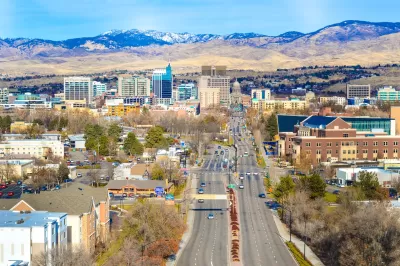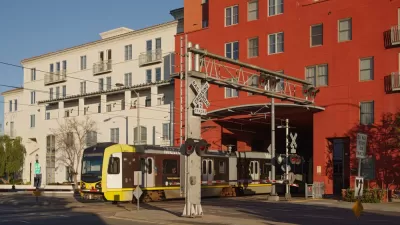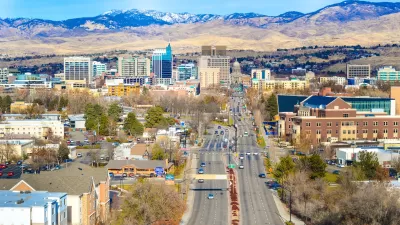The rapidly growing city is evaluating ways to increase housing production, reduce car dependency, and make Boise more walkable.

With housing costs soaring (in January, median rents were up by more than 20 percent from the previous year, rising faster than in any other American city), Boise is looking to revise its zoning code and guide denser development in the rapidly growing city, reports Joni Auden Land for the Idaho Statesman.
"Most council members agreed they wanted the new code to allow for a more urban environment, rather than what they characterized as suburban planning guidelines in the [draft] module," writes Land. Council members expressed a desire to see taller buildings, reduced parking requirements, legalized accessory dwelling units (ADUs) such as garage apartments, and mixed-use development. "One benefit of this denser planning, they said, could be to increase Boise’s housing supply, which lags far behind demand. Proponents say denser planning could allow for more units to be built and help fill the widening gap," according to the article. "Multiple council members said the draft did not go far enough to make Boise a more walkable city, where residents would not need a car to access businesses, schools and other services." Council Member Holli Woodings called for more mixed-use development that puts businesses closer to where people live.
According to an August 2021 city report, Boise needs more than 27,000 new housing units, 77 percent of which should be affordable, by 2030 to meet growing demand. Boise's population grew by 14 percent in the decade between 2010 and 2020.
FULL STORY: A denser, big-city feel: Council offers new vision for Boise’s future — and affordability

Manufactured Crisis: Losing the Nation’s Largest Source of Unsubsidized Affordable Housing
Manufactured housing communities have long been an affordable housing option for millions of people living in the U.S., but that affordability is disappearing rapidly. How did we get here?

Americans May Be Stuck — But Why?
Americans are moving a lot less than they once did, and that is a problem. While Yoni Applebaum, in his highly-publicized article Stuck, gets the reasons badly wrong, it's still important to ask: why are we moving so much less than before?

Research Shows More Roads = More Driving
A national study shows, once again, that increasing road supply induces additional vehicle travel, particularly over the long run.

Gary, Indiana to Expand Transit Service, Bike Share
The city plans to launch a bike share system in April and expand service on its bus routes.

Pittsburgh Rolls Out Electric School Buses
Pittsburgh Public Schools has launched its first electric school buses, with plans to fully electrify its fleet over the next 14 months, aiming to create a cleaner, more sustainable transportation system supported by new charging infrastructure.

Concrete to Community: A Schoolyard Makeover in West Philly
With guidance from the Trust for Public Land, third graders at Overbrook Elementary are leading the redesign of their asphalt schoolyard into a vibrant green space, learning valuable skills and creating lasting community impact in the process.
Urban Design for Planners 1: Software Tools
This six-course series explores essential urban design concepts using open source software and equips planners with the tools they need to participate fully in the urban design process.
Planning for Universal Design
Learn the tools for implementing Universal Design in planning regulations.
City of Moreno Valley
Institute for Housing and Urban Development Studies (IHS)
City of Grandview
Harvard GSD Executive Education
NYU Wagner Graduate School of Public Service
City of Cambridge, Maryland
Newport County Development Council: Connect Greater Newport





























